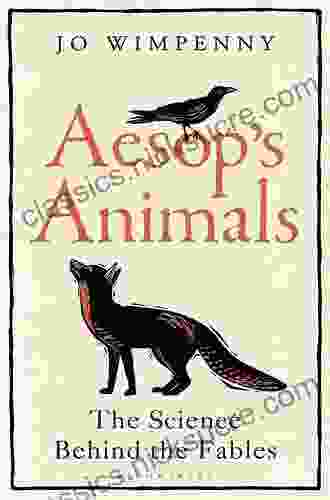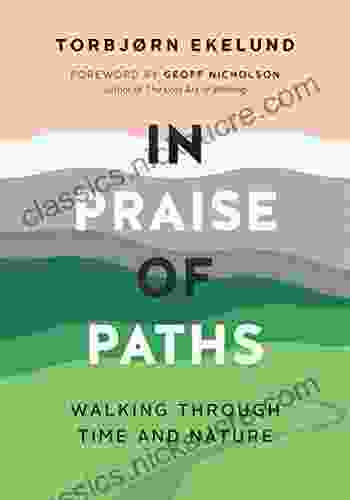Aesop Animals: The Science Behind the Fables

Aesop's fables are some of the most famous stories in the world. They have been told for centuries and have been translated into dozens of languages. But did you know that there is a lot of science behind these stories?
4.6 out of 5
| Language | : | English |
| File size | : | 2518 KB |
| Text-to-Speech | : | Enabled |
| Screen Reader | : | Supported |
| Enhanced typesetting | : | Enabled |
| Word Wise | : | Enabled |
| Print length | : | 233 pages |
Aesop's fables are often used to teach children about morality. But they can also be used to teach children about science. In this article, we will explore the science behind some of Aesop's most popular fables.
The Ant and the Grasshopper
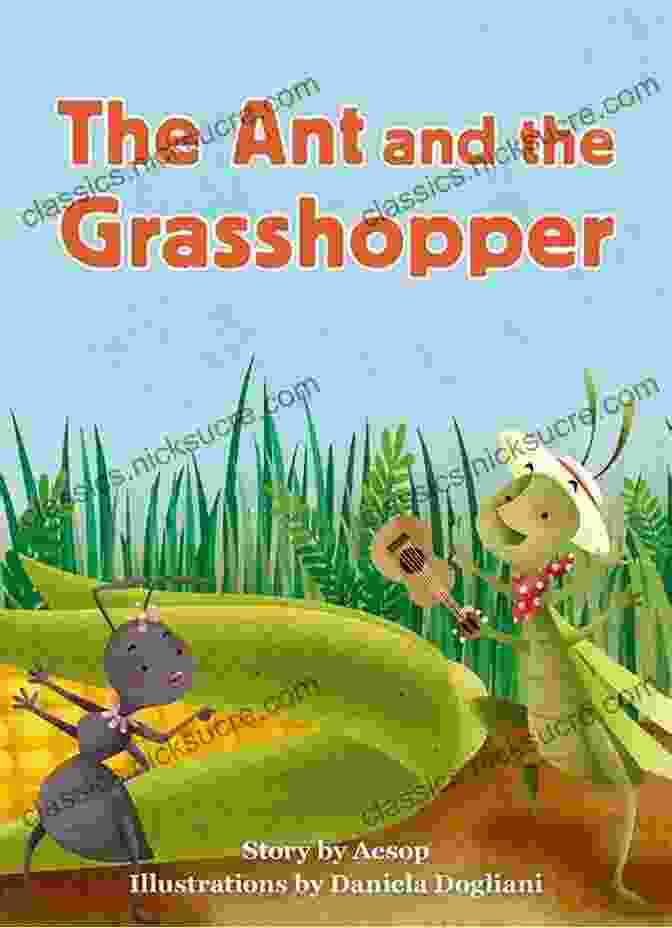
The Ant and the Grasshopper is one of Aesop's most famous fables. It tells the story of an ant who works hard all summer while a grasshopper plays. When winter comes, the ant has food to eat while the grasshopper has nothing. This fable teaches the importance of hard work and planning for the future.
But there is also a lot of science behind this fable. Ants are known for their industriousness. They work together to build colonies and gather food. Grasshoppers, on the other hand, are known for their laziness. They spend most of their time hopping around and eating.
The difference in behavior between ants and grasshoppers is due to their different metabolisms. Ants have a high metabolism, which means that they need to eat a lot of food to survive. Grasshoppers, on the other hand, have a low metabolism, which means that they can go for long periods of time without eating.
This difference in metabolism explains why the ant is able to work hard all summer while the grasshopper plays. The ant needs to eat a lot of food to survive, so it is motivated to work hard to gather food. The grasshopper, on the other hand, can go for long periods of time without eating, so it is not as motivated to work hard.
The Tortoise and the Hare

The Tortoise and the Hare is another one of Aesop's most famous fables. It tells the story of a tortoise who races a hare. The hare is much faster than the tortoise, but the tortoise wins the race because the hare takes a nap. This fable teaches the importance of perseverance and never giving up.
But there is also a lot of science behind this fable. Tortoises are known for their slowness. They move at a very slow pace, but they are very persistent. Hares, on the other hand, are known for their speed. They can run very fast, but they are not as persistent as tortoises.
The difference in speed between tortoises and hares is due to their different physiologies. Tortoises have a heavy shell that protects them from predators. This shell also makes them slow. Hares, on the other hand, have a light body that allows them to run very fast. However, hares are not as protected from predators as tortoises.
The difference in physiology between tortoises and hares explains why the tortoise is able to win the race even though the hare is much faster. The tortoise is slow, but it is persistent. The hare is fast, but it is not as persistent as the tortoise.
The Lion and the Mouse
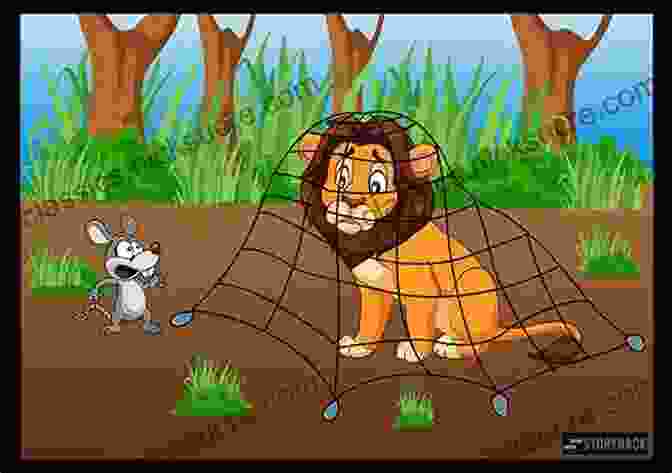
The Lion and the Mouse is another one of Aesop's most famous fables. It tells the story of a lion who is captured by a mouse. The lion is surprised that the mouse is able to capture him, but the mouse explains that even the smallest creature can make a difference. This fable teaches the importance of kindness and helping others.
But there is also a lot of science behind this fable. Lions are known for their strength. They are powerful predators that can easily kill other animals. Mice, on the other hand, are known for their small size. They are not as strong as lions, but they are very clever and resourceful.
The difference in size and strength between lions and mice is due to their different evolutionary histories. Lions have evolved to be large and powerful predators. Mice, on the other hand, have evolved to be small and agile. This difference in evolutionary history explains why the mouse is able to capture the lion even though the lion is much bigger and stronger.
The Lion and the Mouse fable teaches us that even the smallest creature can make a difference. This is because even the smallest creature has unique strengths and abilities. We should never underestimate the power of kindness and helping others.
Aesop's fables are full of wisdom and science. They can teach us about important life lessons, such as the importance of hard work, perseverance, kindness, and helping others. They can also teach us about the natural world and the different creatures that inhabit it.
Next time you read an Aesop fable, take some time to think about the science behind it. You may be surprised at how much you can learn.
4.6 out of 5
| Language | : | English |
| File size | : | 2518 KB |
| Text-to-Speech | : | Enabled |
| Screen Reader | : | Supported |
| Enhanced typesetting | : | Enabled |
| Word Wise | : | Enabled |
| Print length | : | 233 pages |
Do you want to contribute by writing guest posts on this blog?
Please contact us and send us a resume of previous articles that you have written.
 Fiction
Fiction Non Fiction
Non Fiction Romance
Romance Mystery
Mystery Thriller
Thriller SciFi
SciFi Fantasy
Fantasy Horror
Horror Biography
Biography Selfhelp
Selfhelp Business
Business History
History Classics
Classics Poetry
Poetry Childrens
Childrens Young Adult
Young Adult Educational
Educational Cooking
Cooking Travel
Travel Lifestyle
Lifestyle Spirituality
Spirituality Health
Health Fitness
Fitness Technology
Technology Science
Science Arts
Arts Crafts
Crafts DIY
DIY Gardening
Gardening Petcare
Petcare Jackson Carter
Jackson Carter Kelly Oram
Kelly Oram Derek C Hutchinson
Derek C Hutchinson Annette Evans
Annette Evans Erika Larkin
Erika Larkin David Hart
David Hart Yury Kronn
Yury Kronn Consumer Dummies
Consumer Dummies Eddie Rafii
Eddie Rafii Rick August
Rick August Judy Arnall
Judy Arnall Lady Gaga
Lady Gaga Anne Laure Jackson
Anne Laure Jackson Leslie Scrivener
Leslie Scrivener Jake Byrne
Jake Byrne Dr Deirdre Clark
Dr Deirdre Clark Kevin Keitoshi Casey
Kevin Keitoshi Casey Spencer Langley
Spencer Langley Al Beatty
Al Beatty Laurence Parent
Laurence Parent Patty Bear
Patty Bear Ronald W Kipp
Ronald W Kipp P G Wodehouse
P G Wodehouse Shelley Emling
Shelley Emling Courtney Mayer
Courtney Mayer Dana Meachen Rau
Dana Meachen Rau Sheril Kirshenbaum
Sheril Kirshenbaum Brandon Sieh
Brandon Sieh Kelly St Clare
Kelly St Clare C G Yeager
C G Yeager Colm Cooper
Colm Cooper Ryan T White
Ryan T White Lisa Delmedico Harris
Lisa Delmedico Harris Bruce Bryans
Bruce Bryans Sarah Luddington
Sarah Luddington Bradley Wiggins
Bradley Wiggins Chad Noreuil
Chad Noreuil Lamar Underwood
Lamar Underwood Richmond Campbell
Richmond Campbell Olly Postanin
Olly Postanin Stan Byrdy
Stan Byrdy Michael Higgins
Michael Higgins David Hoffbrand
David Hoffbrand Phillip E Johnson
Phillip E Johnson Saul Greenberg
Saul Greenberg Scott Ellsworth
Scott Ellsworth Stephen Kendrick
Stephen Kendrick Christopher D Winnan
Christopher D Winnan Marv Wolfman
Marv Wolfman Christo Obreschkow
Christo Obreschkow Peter Turchin
Peter Turchin Greg Jacobs
Greg Jacobs Companion Works
Companion Works Edward Espe Brown
Edward Espe Brown Bill Plotkin
Bill Plotkin Jacob Biggle
Jacob Biggle M J Ryan
M J Ryan Casey Mcquiston
Casey Mcquiston Rabbi Jason Sobel
Rabbi Jason Sobel Anthony E Wolf
Anthony E Wolf Matilda Joslyn Gage
Matilda Joslyn Gage Supersummary
Supersummary Laura Warren Hill
Laura Warren Hill John Snygg
John Snygg Peter Grey
Peter Grey Babette A Brumback
Babette A Brumback Aarron Davis
Aarron Davis Notesbo Funny
Notesbo Funny John Michael Greer
John Michael Greer Rick Brinkman
Rick Brinkman L J Smith
L J Smith Michelle Obama
Michelle Obama Michael A Stackpole
Michael A Stackpole Cindy Pawlcyn
Cindy Pawlcyn David Shoemaker
David Shoemaker Kathryn Cadenhead Colgrove
Kathryn Cadenhead Colgrove Eric J Mash
Eric J Mash Annette Lareau
Annette Lareau Gerald Marzorati
Gerald Marzorati Jerry A Pattengale
Jerry A Pattengale Rose Kelly
Rose Kelly C Rich
C Rich David G Mcafee
David G Mcafee Jeffrey E F Friedl
Jeffrey E F Friedl Tom Hull
Tom Hull Kate Jones
Kate Jones Madeleine Boskovitz Ph D
Madeleine Boskovitz Ph D Julie Schoen
Julie Schoen Joshua Piven
Joshua Piven Sara Bennett
Sara Bennett W Ben Hunt
W Ben Hunt Steve Mcmichael
Steve Mcmichael William A Richards
William A Richards Jackie Bolen
Jackie Bolen Michael Volkmar
Michael Volkmar Tim Grollimund
Tim Grollimund Shea Serrano
Shea Serrano Frank Burtnett
Frank Burtnett Rina Mae Acosta
Rina Mae Acosta Anne Crossman
Anne Crossman Sir Francis Chichester
Sir Francis Chichester John J Donohue
John J Donohue Bill Shipley
Bill Shipley Richard Watts
Richard Watts John R Anderson
John R Anderson Melinda Sharma
Melinda Sharma George M Marsden
George M Marsden T Edward Nickens
T Edward Nickens Maria Del Mar Sacasa
Maria Del Mar Sacasa Anthony Edwards
Anthony Edwards Shannon Allen
Shannon Allen Tella Olayeri
Tella Olayeri Thomas Celentano
Thomas Celentano Janet Lansbury
Janet Lansbury Jennifer L Lopez
Jennifer L Lopez David C M Dickson
David C M Dickson Stanley H Block
Stanley H Block Lena Empyema
Lena Empyema Susan H Kamei
Susan H Kamei John N Carbone
John N Carbone Yani Alfonso
Yani Alfonso David Mcgowan
David Mcgowan Kerry Andy Ph D
Kerry Andy Ph D Magoosh
Magoosh David Hume
David Hume Dr Hooelz
Dr Hooelz Paul H Wender
Paul H Wender Lee Carroll
Lee Carroll Anthea Sharp
Anthea Sharp David Long
David Long Deborah Ellis
Deborah Ellis Christine Gross Loh
Christine Gross Loh Zenas Leonard
Zenas Leonard Jacqueline Boyle
Jacqueline Boyle Sarah Beeson
Sarah Beeson Glen Simmons
Glen Simmons Nat Brown
Nat Brown Theodore M Porter
Theodore M Porter Bob Seshadri
Bob Seshadri Thomas Settimi
Thomas Settimi Marsha M Linehan
Marsha M Linehan Francis Su
Francis Su Kj Dell Antonia
Kj Dell Antonia Marcus Engel
Marcus Engel Kathryn Aalto
Kathryn Aalto Steven M Rice
Steven M Rice Michael Lieberman
Michael Lieberman Caroline D Greene
Caroline D Greene Jack Thurston
Jack Thurston I Randolph Daniel
I Randolph Daniel Tom Clynes
Tom Clynes Kathleen M Galvin
Kathleen M Galvin Lexie Williamson
Lexie Williamson Dr Julie Shannon
Dr Julie Shannon Critical Role
Critical Role Annie Brock
Annie Brock William S Vincent
William S Vincent Jack Challoner
Jack Challoner Joshua Lawrence Kinser
Joshua Lawrence Kinser Bryan Greetham
Bryan Greetham Sabrina Sargent
Sabrina Sargent Melinda Cooper
Melinda Cooper Don Cherry
Don Cherry Wayne L Winston
Wayne L Winston Henry Malone
Henry Malone Pedro J Izquierdo
Pedro J Izquierdo Srinivasan S Pillay
Srinivasan S Pillay Jo Wimpenny
Jo Wimpenny Sali Hughes
Sali Hughes Laura Hillenbrand
Laura Hillenbrand Chella Quint
Chella Quint Lynn Painter
Lynn Painter Britta Wallace
Britta Wallace Billy Hansen
Billy Hansen Timothy Egan
Timothy Egan Justin J Lehmiller
Justin J Lehmiller Beth Jacobs Phd
Beth Jacobs Phd Benjamin Wiker
Benjamin Wiker John U Bacon
John U Bacon Eric Stice
Eric Stice K Loraine
K Loraine Danya Ruttenberg
Danya Ruttenberg Graham Poll
Graham Poll Gary Genard
Gary Genard Shyam Bharath S D
Shyam Bharath S D John Allen Paulos
John Allen Paulos Shing Yin Khor
Shing Yin Khor Michelle Mullen
Michelle Mullen Anne Winkler Morey
Anne Winkler Morey Mark Murphy
Mark Murphy Annie Duke
Annie Duke Jaron Lanier
Jaron Lanier Francis French
Francis French Julia Cook
Julia Cook Barney Scout Mann
Barney Scout Mann Terri Schneider
Terri Schneider Christie Matheson
Christie Matheson Anne Griffin Perry
Anne Griffin Perry Michael Wombacher
Michael Wombacher Bert Randolph Sugar
Bert Randolph Sugar Meg Meeker
Meg Meeker Ted Leeson
Ted Leeson Stephen Rodrick
Stephen Rodrick Phil Richards
Phil Richards Barbara Savage
Barbara Savage Marlo Thomas
Marlo Thomas Julie Kagawa
Julie Kagawa Julian Savulescu
Julian Savulescu Anne Garrels
Anne Garrels Robert Weintraub
Robert Weintraub Jean Watson
Jean Watson Kristi Hugstad
Kristi Hugstad Steve Currier
Steve Currier Patrick Mansell
Patrick Mansell Michael Mckinley
Michael Mckinley Colleen Macklin
Colleen Macklin R Michael Shaft
R Michael Shaft Judy Corry
Judy Corry Emily L Casanova
Emily L Casanova Martin Lees
Martin Lees Micheal J Murphy
Micheal J Murphy Vic Widman
Vic Widman Maxine Van Evera Lupo
Maxine Van Evera Lupo Md Nazaneen Homaifar
Md Nazaneen Homaifar Henry Stedman
Henry Stedman Christopher F Chabris
Christopher F Chabris Aw Schultz
Aw Schultz Svetlana Boym
Svetlana Boym Raye Wagner
Raye Wagner Darren Levine
Darren Levine Thema Bryant Davis
Thema Bryant Davis Robert Kaplinsky
Robert Kaplinsky Shanna Swendson
Shanna Swendson Jeff Feldhahn
Jeff Feldhahn Elia Kacapyr
Elia Kacapyr Kay West
Kay West Thor Heyerdahl
Thor Heyerdahl Ascencia Pharmacy Technician Exam Prep Team
Ascencia Pharmacy Technician Exam Prep Team Proper Education Group
Proper Education Group Gabrielle Walker
Gabrielle Walker Mike Ashley
Mike Ashley Lucie Hemmen
Lucie Hemmen Annette Dixon
Annette Dixon Vijay Prashad
Vijay Prashad Frost Kay
Frost Kay Jd Long
Jd Long Zoeunlimited
Zoeunlimited Shirley Davis Brown
Shirley Davis Brown Norm Zeigler
Norm Zeigler Creek Stewart
Creek Stewart Cylin Busby
Cylin Busby Christopher Paolini
Christopher Paolini Eduardo Kohn
Eduardo Kohn Doug Knutson
Doug Knutson Peter Walker
Peter Walker Audiolearn Content Team
Audiolearn Content Team Leo Furcht
Leo Furcht John Powers
John Powers Luke Amadeus Ranieri
Luke Amadeus Ranieri Dave Heller
Dave Heller David H Stern
David H Stern Harvey Karp
Harvey Karp Ernest Nagel
Ernest Nagel Geoff Greig
Geoff Greig Rory D Nelson
Rory D Nelson Mana Takahashi
Mana Takahashi Vanessa Van Edwards
Vanessa Van Edwards Jamie Thom
Jamie Thom Stephen White
Stephen White Herbert Dorsey
Herbert Dorsey Kathleen Kirkland
Kathleen Kirkland Johnson Smith
Johnson Smith Jessica Megan Larson
Jessica Megan Larson Johnny Weir
Johnny Weir Jean Liedloff
Jean Liedloff Jak Beardsworth
Jak Beardsworth Jean Markale
Jean Markale Jan D Carline
Jan D Carline Peter C Earle
Peter C Earle Tim Sullivan
Tim Sullivan Peter Lipton
Peter Lipton Marcia L London
Marcia L London Douglas R Dechow
Douglas R Dechow Dave Bosanko
Dave Bosanko Henry Treece
Henry Treece Annemarie Brear
Annemarie Brear Annie Thoms
Annie Thoms Barry Meadow
Barry Meadow Claire Fraise
Claire Fraise Douglas Boze
Douglas Boze T K Richardson
T K Richardson Heather Atkinson
Heather Atkinson Helena Hjalmarsson
Helena Hjalmarsson Bob Mullen
Bob Mullen Tim Hill
Tim Hill Vincent J Monastra
Vincent J Monastra David Lindley
David Lindley Mishka Shubaly
Mishka Shubaly Paul Nardozzi
Paul Nardozzi Ken Bain
Ken Bain Katie Hewett
Katie Hewett David M Carballo
David M Carballo Filipe Masetti Leite
Filipe Masetti Leite Jamie Davis
Jamie Davis Florence Littauer
Florence Littauer Jody Studdard
Jody Studdard Marie W Lawrence
Marie W Lawrence Anne Mctiernan
Anne Mctiernan Reia
Reia Victoria Biggs
Victoria Biggs Dustin Brady
Dustin Brady Traci B Fox
Traci B Fox C Mo
C Mo Skeleton Steve
Skeleton Steve David Norrie
David Norrie Elizabeth Pantley
Elizabeth Pantley Gareth James
Gareth James Richard Freeman
Richard Freeman Paul J Zak
Paul J Zak Claire Legrand
Claire Legrand Bianca Scardoni
Bianca Scardoni Josh Alwine
Josh Alwine Shannon Lee
Shannon Lee Kristen Welch
Kristen Welch New England Wild Flower Society
New England Wild Flower Society Shaun Gallagher
Shaun Gallagher Annie Murphy Paul
Annie Murphy Paul R I Chalmers
R I Chalmers Mamma Margaret
Mamma Margaret Ron Fry
Ron Fry Jim Zub
Jim Zub Randy Ribay
Randy Ribay Hans Florine
Hans Florine Ross W Greene
Ross W Greene Whitney Stewart
Whitney Stewart Margaret L Lial
Margaret L Lial Herb Payson
Herb Payson Ben Alexander
Ben Alexander Joseph Mctaggart
Joseph Mctaggart Johnny Chuong
Johnny Chuong Marcia Nathai Balkissoon
Marcia Nathai Balkissoon Sean Moloney
Sean Moloney William Johnston
William Johnston Ken Shamrock
Ken Shamrock Steve Mchugh
Steve Mchugh James Lock
James Lock Richard Evans
Richard Evans Annie Boochever
Annie Boochever Joe Borelli
Joe Borelli Donald Asher
Donald Asher Olivia Seltzer
Olivia Seltzer Desmond Morris
Desmond Morris Lucy Sutcliffe
Lucy Sutcliffe Lavinia Spalding
Lavinia Spalding Hiro Fujiwara
Hiro Fujiwara Wiley Mccrary
Wiley Mccrary Carl Hiaasen
Carl Hiaasen Jack Petrash
Jack Petrash Kim Hutchinson
Kim Hutchinson Trina Boice
Trina Boice Robert Nye
Robert Nye Neva Sullaway
Neva Sullaway Kass Morgan
Kass Morgan Mjg Education
Mjg Education Kris Hampton
Kris Hampton Patrick Leigh Fermor
Patrick Leigh Fermor Merlisa Lawrence Corbett
Merlisa Lawrence Corbett Kindle Edition
Kindle Edition La Leche League International
La Leche League International Tony Nester
Tony Nester Ed Van Put
Ed Van Put Carter G Walker
Carter G Walker Ben Stoeger
Ben Stoeger Russ King
Russ King Paul Wilbur
Paul Wilbur Jon Cohen
Jon Cohen Richard Sale
Richard Sale Ric K Hill
Ric K Hill New Scientist
New Scientist Daniele Bolelli
Daniele Bolelli Charles L Byrne
Charles L Byrne Steve Schwartz
Steve Schwartz Ken Siri
Ken Siri Jeffrey Rubin
Jeffrey Rubin Kimberly D Coleman
Kimberly D Coleman Steven Harrison
Steven Harrison Dr Harrison Sachs
Dr Harrison Sachs Frank M Snowden
Frank M Snowden Jamie D Roberts Lmft
Jamie D Roberts Lmft Chris Creamer
Chris Creamer The Tutorverse
The Tutorverse Michael Werner
Michael Werner Michael Howard
Michael Howard Joe Samuel Starnes
Joe Samuel Starnes Kay L Moody
Kay L Moody Ted Starkey
Ted Starkey Harlan Cohen
Harlan Cohen Nancy Forbes
Nancy Forbes Heath Lambert
Heath Lambert Nicholas Johnson
Nicholas Johnson Ashild Kolas
Ashild Kolas Ruth Ravid
Ruth Ravid Daniel Barbarisi
Daniel Barbarisi Allistair Mccaw
Allistair Mccaw Dan John
Dan John Monica Seles
Monica Seles Bernard Ollivier
Bernard Ollivier William J Knaus
William J Knaus Bobby Bowden
Bobby Bowden Jolene Stockman
Jolene Stockman Kevin Fall
Kevin Fall Lamorna Ash
Lamorna Ash Belden C Lane
Belden C Lane David W Shaw
David W Shaw Michael Bernick
Michael Bernick Richard Preston
Richard Preston Gail Fay
Gail Fay Tomohito Oda
Tomohito Oda Fred Shoemaker
Fred Shoemaker Lorne Rubenstein
Lorne Rubenstein Jennifer Berne
Jennifer Berne Anne Lamott
Anne Lamott Zohar Ben Shoham
Zohar Ben Shoham Matt Bronsil
Matt Bronsil John Mole
John Mole Simon Gawesworth
Simon Gawesworth David Foster Wallace
David Foster Wallace Gareth Ainsworth
Gareth Ainsworth Richard Allen
Richard Allen Del Hungerford
Del Hungerford Julie Foudy
Julie Foudy Jim Meuninck
Jim Meuninck Wilfred Cude
Wilfred Cude Jacalyn Duffin
Jacalyn Duffin Chuck Tingle
Chuck Tingle Susan Ee
Susan Ee Warren Hilton
Warren Hilton Dean Karlan
Dean Karlan Iain Campbell
Iain Campbell Joel Gunderson
Joel Gunderson Christopher Van Tilburg
Christopher Van Tilburg Tanya Lloyd Kyi
Tanya Lloyd Kyi Jacob Erez
Jacob Erez Sue Dumais
Sue Dumais Rachel Macy Stafford
Rachel Macy Stafford Sasha Sagan
Sasha Sagan Daniel L Bray
Daniel L Bray Marilynn Hughes
Marilynn Hughes Marie Lu
Marie Lu Sarah Kowalski
Sarah Kowalski Annie Vernon
Annie Vernon Anneli Williams
Anneli Williams Isee Exam Preparation Experts
Isee Exam Preparation Experts Susan Dexter
Susan Dexter Teri Halstead Rn Msn
Teri Halstead Rn Msn Anne Blythe
Anne Blythe Keith Devlin
Keith Devlin William Rathje
William Rathje David Sheff
David Sheff Jennifer Raff
Jennifer Raff Glenn Adamson
Glenn Adamson Kristina Kuzmic
Kristina Kuzmic Joshua M Powell
Joshua M Powell Tarl Warwick
Tarl Warwick Lorraine Evans
Lorraine Evans David Cayley
David Cayley Brian J Sorrells
Brian J Sorrells Ed Housewright
Ed Housewright Francheska Fifield
Francheska Fifield Carl Nattrass
Carl Nattrass Julie Hall
Julie Hall Ralph Henry Barbour
Ralph Henry Barbour Giovanni Bennardo
Giovanni Bennardo Julian Winters
Julian Winters Fazale Rana
Fazale Rana Jules Archer
Jules Archer Anne Arthur
Anne Arthur Lynn Marriott
Lynn Marriott Karen Simmers Nartker
Karen Simmers Nartker Margaret Bemister
Margaret Bemister Roger Eckstine
Roger Eckstine Julian Thomas
Julian Thomas Abdi Nazemian
Abdi Nazemian
Light bulbAdvertise smarter! Our strategic ad space ensures maximum exposure. Reserve your spot today!
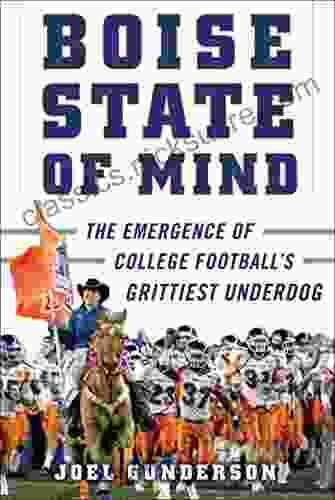
 Caleb CarterBoise State of Mind: A Comprehensive Guide to the City's Culture, Lifestyle,...
Caleb CarterBoise State of Mind: A Comprehensive Guide to the City's Culture, Lifestyle,...
 Phil FosterUnveiling the Enchanting World of Thirty Indian Legends by Margaret Bemister:...
Phil FosterUnveiling the Enchanting World of Thirty Indian Legends by Margaret Bemister:... Carson BlairFollow ·9.7k
Carson BlairFollow ·9.7k Samuel WardFollow ·5.6k
Samuel WardFollow ·5.6k Harvey BellFollow ·2.1k
Harvey BellFollow ·2.1k Clay PowellFollow ·9k
Clay PowellFollow ·9k Robbie CarterFollow ·7.4k
Robbie CarterFollow ·7.4k Walter SimmonsFollow ·6.6k
Walter SimmonsFollow ·6.6k Chris ColemanFollow ·18.7k
Chris ColemanFollow ·18.7k Elias MitchellFollow ·12.6k
Elias MitchellFollow ·12.6k

 George Martin
George MartinWildcard Warcross by Marie Lu: The Ultimate Guide to the...
Wildcard Warcross, the...

 Houston Powell
Houston PowellMountaineering Madness: The Deadly Race to Summit the...
The Himalayas, towering over the...

 Levi Powell
Levi PowellNonparametric Statistical Inference: A Comprehensive...
Nonparametric statistical inference is a...
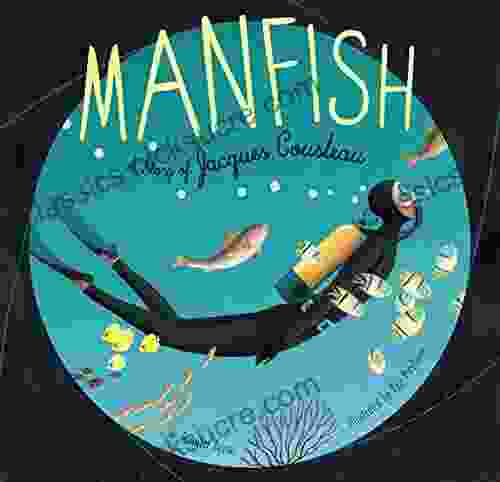
 Salman Rushdie
Salman RushdieManfish: The Extraordinary Story of Jacques Cousteau, the...
Early Life and Diving Experiments ...

 Ross Nelson
Ross NelsonThe Sweet Spot: Great Golf Starts Here
Welcome to The Sweet Spot,...
4.6 out of 5
| Language | : | English |
| File size | : | 2518 KB |
| Text-to-Speech | : | Enabled |
| Screen Reader | : | Supported |
| Enhanced typesetting | : | Enabled |
| Word Wise | : | Enabled |
| Print length | : | 233 pages |


